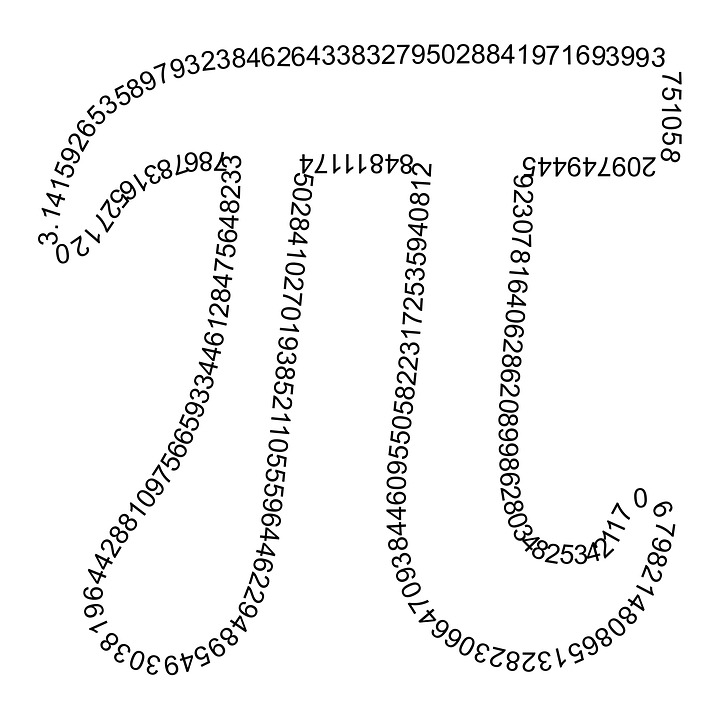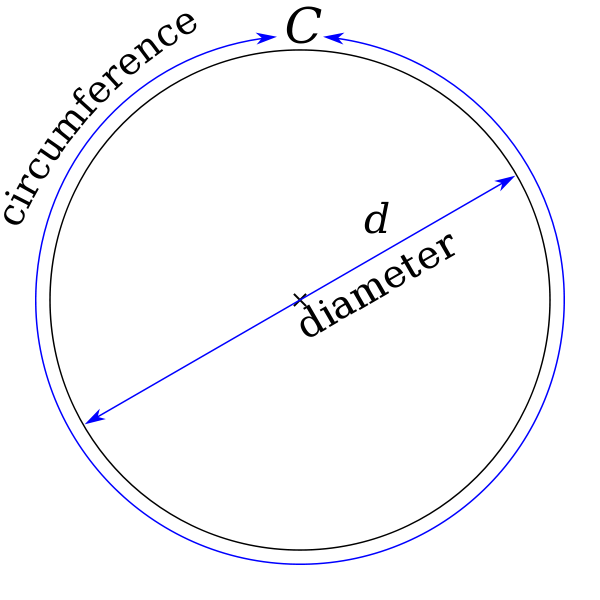Pi (π) is considered the most beautiful number, and is celebrated every March 14th. Here’s why.
I bet you already know what p is. If I ask you, you will reply pfff p equals 3.14 and a bunch of numbers; so what?
- It even has a day that the scientists & mathematicians celebrate it? What makes it so great and so interesting?
March 14th is the Pi Day


What exactly is pi?

Pi (π) is defined as the ratio of the circumference of a circle to its diameter. It is an irrational number1, and its decimals do not have an end. The actual calculation of this number has been a challenge through the ages.
Who first tried to calculate the ration is unknown, but apparently the first ones that attempted to calculate it were the Babylonians & Egyptians, more than 4000 years ago. 2
Around 1650 BC in an ancient Egyptian papyrus it is implied by the method used, that the pi equals approximately 3.16049 (which for the time being is considered to be very close to the result). The Chinese calculated that the pi was 3.
The first man to really make an impact in the calculation of pi was the Greek, Archimedes of Syracuse. Where Antiphon and Bryson left off with their inscribed and circumscribed polygons, Archimedes took up the challenge. However, he used a slightly different method than they used. Archimedes focused on the polygons' perimeters as opposed to their areas, so that he approximated the circle's circumference instead of the area.
(For more mathematical details & historic details please click here
There have been numerous efforts and calculations in order for the more accurate number to be found. It is worth to mention the astronomy professor John Machin, who in 1706 managed to calculate pi, with 100 decimal places (by hand!) In 1873, William Shanks calculated 707 places of pi.
For the next hundred years, no major events occurred in the pursuit of pi. More and more digits were computed, but there were no earth-shattering breakthroughs. In 1882, Ferdinand von Lindemann proved the transcendence2 of pi.
In 2011 Mathematicians have been able to calculate so many as 10 trillion digits! 3

When was the Greek letter π adopted?
The Greek letter π is an abbreviation for periphery (περιφέρεια). As per Wikipedia, the first recorded use is “Oughtred’s” in 1647 in order to represent the number 3.14…
Euler4 started using the single-letter form beginning with his 1727 Essay Explaining The Properties Of Air, though he used π = 6.28…, the ratio of radius to periphery, in this and some later writing. Euler first used π=3.14…

No more history, let’s learn some fun facts about pi!
- Pi, is an irrational and transcendental number. Its digits have no end, they continue infinitely and no digit-pattern is repeated.
- In 1995, the Japanese Hiroyoki Gotu managed to memorize 42.195 places of pi!5
- If you have heard of the famous Greek phrase “Do not touch my circles”, apparently this was said by Archimedes (287-212 BC)6, because during his calculations of pi, a Roman soldier dared to disturb him. Apparently these were also the last words of Archimedes, because the soldier killed him immediately after.
- Pi is celebrated 14 of March because it … looks like it. (3.14). It is worth to mention that Albert Einstein was born also on a 14 of March (1879)
If you thought the pi is a pure mathematical symbol; you are wrong!
Apparently, scientists have discovered a pi formula hidden in the “quantum physics world”
You can read more about this fascinating discovery here
And that’s only a fraction
Pi is one of the most famous numbers and has been in people’s minds thousands of years ago. Pi exists everywhere, it has even been discovered that it exists in the Pyramids and there are scholars obsessed to search patterns in pi.
I invite you all to take some time and read about pi, you might not exactly love mathematics, but please don’t tell me that this is not a fascinating, infinite number that blows your mind to think of what people have gone through to compute it?
In honor of π and all those who struggled, lost their sleep, forgot to eat in the name of discoveries, in the name of science, in the name of innovation.
Sources:
Wikipedia Pi
Mathu.rutgers.edu
FactRetriever
semanticscholar
Birth, growth and computation of pi to ten trillion digits Ravi P Agarwal1*, Hans Agarwal and Syamal K Sen
six things about pi, via wired.com
Pi and the great pyramid
Images credits: (CC0 Licence)
https://pixabay.com/en/pi-maths-symbol-formula-algebra-254084/
https://pixabay.com/en/pi-circle-diameter-circumference-1343261/
https://en.wikipedia.org/wiki/Pi#/media/File:Pi_eq_C_over_d.svg
Thank you very much for reading! I hope you found this info useful, please feel free to comment below and if you would like to stay in touch – click the links to follow me!





Feel free to check out the 32nd Distilled by @steemstem
If you want to discuss with the STEEMSTEM, please do not hesitate to join their steemSTEM discord server or to follow their curation trail (just ask for more information on the chat for details).









Comments